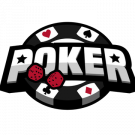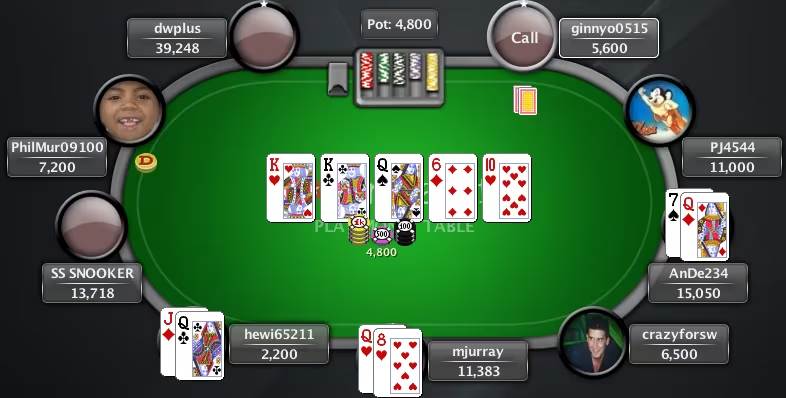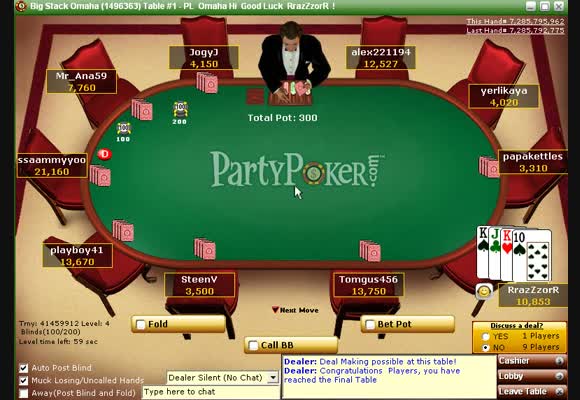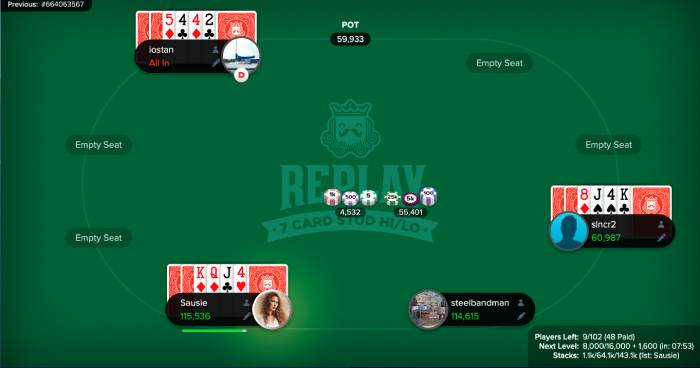Poker is, in some way, a paradoxical game. It is very easy to play, but extremely difficult to win. What we mean is that overall, poker rules are quite simple. Even a child could master them in 30-40 minutes. However, how to apply these rules is a completely different thing. The player needs to have extraordinary skills, read more than one poker guide, develop analytical and predictive abilities to get an advantage over the opponents.
Poker Rules, Strategies, and Tips
Yes, of course, much depends on luck. This applies not only to poker but to all other card games. But, luck is only half the success. That is why, over the long term, a good player will always outplay a novice.
Do you want to increase your chances of success? We suggest you read this tutorial. Here, you will find a lot of useful information. It is especially useful for beginners who are just starting to learn the basics of this very popular game.
Basic Poker Rules
To help you better remember the rules, we will consider them using the example of a standard poker game. The game is divided into two phases: card dealing and betting.
But first, let’s note that the goal of each player is to collect a specific combination of cards. This is one of the poker basic rules. Such a combination is called a “hand”. They differ in strength. Below, you can see all the combinations – from the weakest to the strongest.
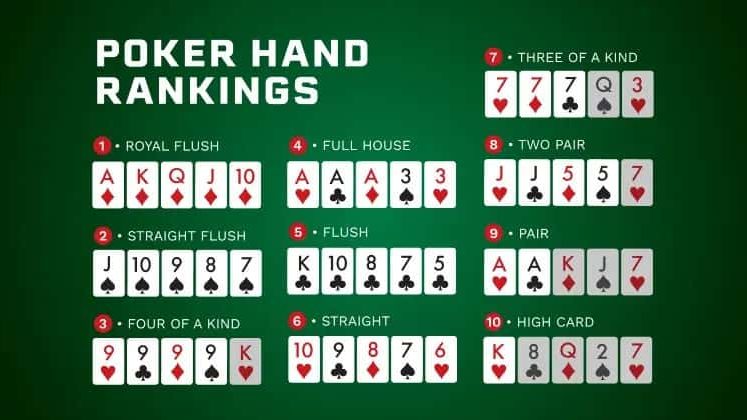
| Combination | Description |
| High card | The strongest card players have. Example: Ace. |
| Pair | Two cards of the same rank. Example: two Jacks. |
| Two pairs | Four cards, divided into two pairs. Example: two Queens, two Jacks. |
| Three of a kind | Three same rank cards. Example: three nines. |
| Straight | Five cards in sequence. Example: 7, 8, 9, 10, Jack. |
| Flush | Five same suit cards. Example: Queen, Ace, King, 2, and 8 of clubs. |
| Full house | Three of a kind plus pair. Example: three Queens, two Jacks. |
| Four of a kind | Four same rank cards. Example: four Queens. |
| Straight flush | Five cards in sequence of the same suit. Example: 2, 3, 4, 5, 6 of clubs. |
| Royal flush | 10, Jack, Queen, King, and Ace of the same suit. |
Now, let’s move on to a game example.
Card Dealing
First, each player receives a certain number of cards that only they can see. They are called “hole cards”. Then, according to poker rules, the dealer places five more cards on the table one by one. These cards are visible to all participants. Each player has the opportunity to take a card from these.
As you might have guessed, the player needs to choose cards that will help them form the strongest combination.
Betting
Players place bets in several stages. The first bet is made after the dealer deals the initial cards to the players. The next bets are made after the third, fourth, and fifth cards.
A player is not obliged to place a bet. If they see that they have not much chances of forming a strong combination, they can fold their cards.
In general, a player has four options between card deals.
Check
If no one has placed a bet before you, you can “check,” meaning you decline to bet but still remain in the hand. This option allows you to see the next card or action without committing any more chips.
Bet
If you believe your hand is strong or want to take control of the pot, you can place a bet. By doing so, you force other players to either match your bet or fold, depending on their hand strength.
Raise
If you feel confident in your hand and want to increase the stakes, you can “raise” the bet, placing more money than the previous player. Other players must match this higher amount (called “calling”) or fold if they don’t want to continue in the round.
Fold
If your hand isn’t strong enough to continue or if the betting has gotten too high, you can “fold,” which means you give up your hand and forfeit any money already placed in the pot. This option allows you to minimize losses and wait for a better opportunity in the next round.
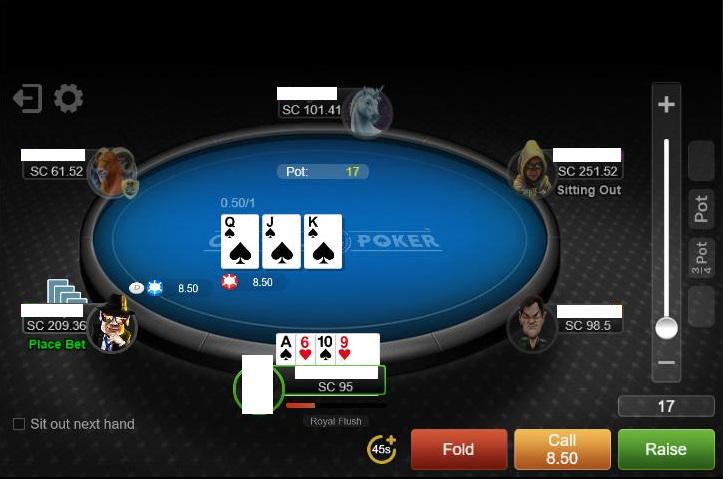
The winner is determined after the players have taken all possible cards and made their bets. All participants reveal their combinations. The one with the strongest hand wins. You can look at the poker order in the table above.
Obviously, the easiest combination to form is a pair. There is a 46% chance of doing so. The chance of getting a royal flush is 0.003%.
Differences in Rules for Various Types of Poker
The most popular type of poker is Texas Hold’em. Players are dealt 2 cards at the start. They can improve their hand by choosing from the 5 cards laid out on the table.
In Omaha, players receive 4 cards. Later, they pick an additional card. To form a combination, they must use at least 2 cards from the cards they were dealt at the very beginning.
Seven-Card Stud is a special poker option. There are no cards laid out on the table. Each player receives 7 cards right away. Some of them are face-up. It means all players can see them. The number of face-up cards may vary in different rounds. Players form combinations from these 7 cards.
Poker Cheat Sheet
A poker cheat sheet is a kind of reference guide for players. It can include various information, but here is the most common one:
Card combinations
A poker cheat sheet provides a clear, ranked list of possible hands, from the rarest and most powerful (Royal Flush) to the lowest (High Card). This helps players instantly evaluate their hand strength and decide on the best course of action. Understanding these combinations is essential for making informed decisions during the game, especially for beginners who might still be learning hand rankings.
Winning probabilities
The cheat sheet also includes odds for hitting specific hands, such as the chances of completing a straight or flush based on community cards or the likelihood of improving your hand with the remaining cards. By knowing these probabilities, players can better assess the potential risk and reward of continuing a hand or folding early.
Aggressive vs. Defensive play
The cheat sheet offers guidance on adjusting your betting strategy based on the strength of your hand. When holding strong hands (e.g., pairs, flushes), the guide encourages aggressive betting to maximize potential winnings. Conversely, with weaker hands or when unsure of opponents’ hands, it advises playing defensively—either by folding or cautiously checking—to minimize losses.
For a beginner, using this cheat sheet during the initial stages of their “poker career” is a great idea. The player doesn’t need to remember every detail.
But, the cheat sheet should not be considered a permanent assistant. It cannot fully replace the player’s own knowledge. Alongside using the cheat sheet, players should continue learning and memorizing all the intricacies of poker.
Poker Odds Calculator
A poker odds calculator is software that allows a player to quickly find out their chances of winning in a particular round. Again: this tool is mainly created for beginners.
The user enters the cards that the players already have, and the cards that are on the table. In the case of opponents, obviously, only face-up cards are entered. The calculator takes into account the remaining cards in the deck. The software provides information on how high the chances are of collecting a strong hand based on the current state of the game.
Needless to say, knowing your odds greatly simplifies the game. You’ll know when to fold and when to play more aggressively. You won’t need to spend time calculating the odds yourself.
The calculator plays another important role for a beginner. It protects against impulsive, reckless decisions. Beginners often make unjustified moves. They rely just on their intuition and are driven by a blind desire to win. Special software will help you cool down.
Poker Positions
Poker positions are the places players have at the table. This position determines when a participant must make their decision: at the beginning, in the middle, or at the end of the round.
- Early positions are the hardest ones.
These players know nothing about the actions their opponents are planning. Aggression is only justified when you have a really strong hand. - Middle positions.
Here, players have a little more information, as they can observe the actions of the players who have already acted before them, but caution is still key because they don’t yet have the complete picture of how the players in later positions will act. - Late positions.
This is the most comfortable option. These players already know their opponents’ decisions and can plan their actions based on this information.
If you’re a beginner, it’s wise to play more conservatively, especially if you’re not in the late position.
Poker Strategy
A good poker strategy is just as important during play as luck. Never play randomly. Especially if you’re playing for real money. Always follow specific rules. Some of them we’ll discuss below.
Simply put, you should always know what bet to place in any given situation. You shouldn’t think for a second, because you already have a pre-planned option. Such a strategy protects you from rash actions.
Bankroll management also means determining the amount of money for a gaming session. For example, if you can afford to lose 500 AUD in an evening, do not exceed this amount. Don’t do it even if you want to compensate for previous losses.
This is the prerogative of more experienced players. The essence of bluffing is as follows: you must make your opponent think you have a stronger hand than you actually do, or vice versa.
Bluffing should not be used frequently. Your opponents may notice patterns in your behavior. Your actions will no longer surprise anyone.
There is also semi-bluffing. This is a situation when you’re one card away from a strong combination, and you take one from the cards on the table. You hint that your hand might be completed, though it’s not quite formed yet.
Every player has their own style, which often reflects their personality. This means that your opponent won’t be able to change their playing manner, unless they’re an exceptionally experienced player or a psychology expert. This is your chance!
For example, if your opponent plays too cautiously, you can constantly pressure them by playing more aggressively. There’s a chance they’ll lose control. If your opponent plays very aggressively, you can often fold but catch them off guard with overconfidence when you have a great hand.
This art can only be mastered with time. Your goal is to make sure the cards you hold do not reflect in your emotions, gestures, or facial expressions. Experienced players use such an approach: sitting at the table, they never show emotions during card deals or bets, or during breaks. By maintaining this monotonous state, it becomes easier to control yourself.
Poker Tips for Better Play
There are poker tips that can increase your chances of success. They are especially useful for beginners.
1. Don’t rush
Beginners often make quick decisions. They think that the first idea that comes to mind is correct. Also, they fear taking too long, they don’t want to make others wait. If you’ve just started playing, you can set a time limit for yourself. For example, “no decisions are made in under 3 minutes”. justified when you have a really strong hand.
2. Don’t be overconfident if you’re not in a late position
Even if you have a straight, don’t rush to bet. Remember what other cards might still be in the deck and what your opponents may have. Often, beginners see a good combination in their hand and immediately decide to play aggressively. This is the wrong strategy.
3. Don’t be overly cautious
This is the opposite situation. Many beginners often fold their cards because they fear losing money. The fear of losing money is common among newcomers. How do you overcome it? Don’t play with money that’s important to you. Remember: poker is a game, not a way to earn money. Risk is always present. You can’t always shield yourself from it. Sometimes, you’ll have to rely on luck. If you constantly fold, you’ll never succeed.
4. Don’t fall for psychological tricks and remember about bluffing
Most beginners take opponents’ gestures and facial expressions at face value. They think they’ve figured out other players’ psychology. If your opponents are somewhat experienced, you’ll often fall victim of their bluffs. Over time, you’ll learn to distinguish real emotions and facial expressions from simulation.
5. Don’t spend more money than you’ve planned
This applies to each specific bet and the game overall. Inexperienced poker players often lose control, especially when they can’t accept a loss. Newcomers try to win back lost money by playing repeatedly. They think that the more rounds they play, the higher the chance they’ll recover their losses. This isn’t true. Often, this strategy leads to even greater losses.
Poker Stakes and Their Impact on Play

A poker stake are the betting limits used at a given table. For example, in one game, you may be required to bet a minimum of 10 AUD, while in another, the minimum bet might be 100 AUD.
If you’re a beginner, high stakes are contraindicated for you. First, you could quickly lose your bankroll. Second, you’ll face a lot of stress during the game. Without enough experience, you won’t be able to control this stress level.
Betting limits affect players’ strategies. If the stakes are low, players often take more risks.. It leads to frequent bluffs and aggressive actions without strong hands. If the stakes are high, players are more likely to act according to the strength of the cards they hold.
Step-by-Step Guide for Beginners
Are you planning to start playing poker? Let’s look at a step-by-step poker guide to help you quickly adapt to this fantastic game.
- Learn the rules. This goes without saying.
- Make a cheat sheet. As we mentioned above, create cues to help you understand game situations faster.
- Choose a strategy.
- Decide on your bet size and bankroll.
- Choose a table based on the bet size you’ve selected.
- Start playing.
Don’t skip any steps on this list, especially preparation. Yes, theory alone won’t make you a good player. But, before you get into practice, you need to at least learn the basics of the game: combinations, bet sizes, and the actions players take during the game. Don’t rush! You will always have time to lose money

Conclusion
As you can see, poker rules are simple enough. It only takes a little time to get a good theoretical foundation. But, to apply these rules effectively, correct preparation is required. Choose a poker strategy, follow our poker tips, and you’ll increase your chances of success.
